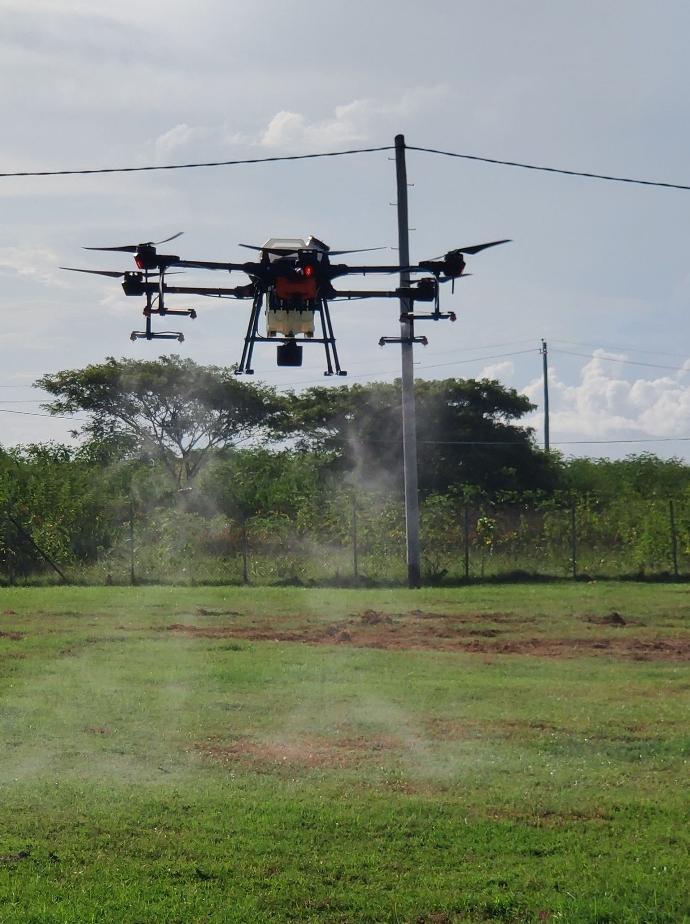Transforming Guyana’s agriculture sector with efficient technology
… the Guydrones story
Agriculture has been the backbone of Guyana’s economy but growth in the productive sector is, at least in part, linked to new solutions meant to improve production and counter new or enduring challenges.
That nexus was recognised by Ershad Mahamad, a Guyanese who grew up amidst Mahaicony Creek rice fields. And he believed there was an opportunity to improve Guyana’s agriculture sector with drone technology.
Unmanned aerial vehicles- or drones, as they are more commonly called- are machines with numerous functions. In agriculture, they can monitor crops and livestock, distribute chemicals and map fields.
Leveraging his aviation experience garnered abroad and an exposure to the growing drone industry, he decided Guyana’s agriculture sector was ready for a tech shift.
That led to the establishment of ‘Guydrones’- a company providing industrial drone solutions in Guyana.
“We saw a need in the agriculture sector,” Mahamed said, sitting in his office at Ogle, East Coast Demerara.
He added, “I’ve seen it work overseas and on the business side it was a niche market, so it made sense to me.”
Believing this venture could help the local sector was just a grain of rice in a lush rice field, though.
Robust engagements with regulatory bodies were needed because the technology and its industrial applications were new to Guyana. Farmers, arguably the most important stakeholders in the forthcoming venture, needed to be convinced that their conventional practices could be improved.
Mahamed said promoting ‘precision agriculture’ was a huge selling point for the company. It helped to convince many of the benefits of these drones.
Through this, the Guydrones team sought to highlight how one drone could identify where pests were, for example, and spray the exact amount of pesticide needed. Ultimately, this could save farmers about 30% of their chemicals.
On the labour side, a drone could potentially apply fertilisers or pesticides to about 100 acres in a day compared to a human spraying the chemicals across five acres in a day.
And with a drone pilot stationed on the ground, this meant human exposure to harmful chemicals were limited.
“Convincing the farmers, at first, was a little challenging,” Mahamed recalled.
In time, however, they have appreciated the benefits of an investment into drones and the use of drone technology.

Eventually, the company was launched in August 2021. And Guydrones, perhaps, could not have been launched at a better time.
Guyana is once again leading the charge of helping the Caribbean grow more food so that its people don’t go hungry and so that less money is spent on importing food from outside the region. But conventional farming, amid the forces of increasing consumption, climate change and price increases linked to global catastrophes, requires support.
So what better way to boost Guyana’s agricultural sector than by infusing more efficient and precise technology?
That’s how Guydrones managed to penetrate the local market and it has been growing substantially ever since.
---
This is Part One of a three-part series on Guydrones and its efforts to transform agriculture in Guyana. In Part Two, we take a look at the growth of Guydrones and in Part Three, we examine what other plans the company has in store.